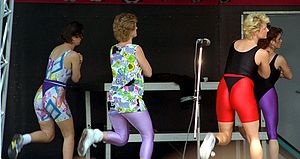[amazon_link asins=’B01NH9QX6R,B01LFYJ43I,B01940F07Y,B01NH9NRWW,B01LWIBUIW,B01LWET8K4,B06XDGBM2V,B016QB8O8G,B01MY9597Q’ template=’ProductLink’ store=’finmeacur-20′ marketplace=’US’ link_id=’53a190eb-0b91-11e7-a47a-55cb89a1ed07′]
The thought, preparation and expense that go into “the great Indian wedding” are unbelievable. Yet barely have the stars faded from the new bride’s eyes than subtle pressure from parents, in-laws, spouse and well-wishers sets in. Everyone wants to hear the “good news” —a baby on the way. People don’t stop to think if the bride is ready for motherhood. And once the mother-to-be has been coddled through the pregnancy and everyone has oohed and aahed over the little bundle of joy, the excitement and interest fades. The new mother finds that she is totally unprepared for the drastic changes in her life after the birth of a baby. No one told her that she might have a baby that refuses to sleep at night or that she would feel and look like an elephant after childbirth.
A weight gain of between 12 to 14kg during pregnancy is normal and healthy. Many women expect all the extra kilos to disappear immediately after delivery. Actually, around 5kg (the weight of the baby and the placenta) will disappear immediately. The rest should disappear gradually within nine months.
Kegel exercise is very much useful so that the pelvic floor muscles to remain shape & size.
[amazon_link asins=’B014GMBDQ2,B01FQ21X16,B01LX505AF,B01EL6A6IO,B01N5HE16R,B00W6T35J6,B018IFNSX4,B01KIKW4LO,B01H14XXP6′ template=’ProductLink’ store=’finmeacur-20′ marketplace=’US’ link_id=’2d718fd0-0b91-11e7-9b7d-8d8463670dc2′]
It is very easy to start overeating after childbirth. Visitors arrive laden with delicious tidbits and vociferously advise rest and a high calorie diet to ensure adequate breast milk. In truth, breast-feeding requires only around 750 extra calories. Since brand new moms tend to be sedentary, their caloric intake should be limited to approximately 2,500 calories. Even though many women complain that they continue to “feel like a bloated elephant” after delivery, this is not the correct time to go on a drastic diet. Healthy eating and judicious exercise will ensure a gradual and safe return to pre-pregnancy weight.
Light aerobic exercise or walking can be started around two weeks after delivery, even by a person who did not exercise at all during pregnancy. But it is important not to do too much too soon. A hormone called relaxin, responsible for making the joints loose during pregnancy so that delivery is easy, persists in the body for about six months after delivery. So vigorous exercise should be started only after six months to avoid damaging joints. Walking 15 minutes a day is a good start. Increase the time by 15 minutes every week until you reach an hour. Endorphins released during walking will help to elevate the mood and combat any post partum depression. It will also help to tone the muscles. Exercise does not reduce breast milk production.
Pain in the genital and the caesarian site often comes as a shock. It makes going to the bathroom or even sitting an ordeal. Many are afraid to take medication (with reason) for fear that it might cross over in the breast milk to the newborn baby. Heat or cold applied locally to the area will relieve the pain. You can use an infra red lamp, a hot water bottle, or apply ice. The ice needs to be in a plastic bag or bottle. To prevent infection, always wash the area with water after going to the bathroom.
The skin over the abdomen may show white lines called stretch marks. These may itch. Applying coconut oil for half an hour before a bath helps.
These usually fade over time. If there is a scar (caesarian or episiotomy), it should be left alone until it has healed completely.
The hormones responsible for maintaining the pregnancy drop suddenly after childbirth. This abrupt change can lead to depression, bouts of crying and feelings of inadequacy. These usually last for around two weeks and then subside by themselves. If they last for a month or longer, then postnatal depression may have developed and a physician should be consulted.
The abdominal wall becomes lax during pregnancy. The abdomen itself may appear pendulous. Sits ups with the knees bend and oblique abdominal exercises will help with this. Start with 10 sets twice a day. Aim to reach 50 repetitions morning and evening within four months. You need to continue doing this exercise at least thrice a week.
A few drops of urine may leak out while coughing, sneezing or laughing. It may be difficult to hold the urine for even a limited time if the bladder is full. This is because the pelvic floor muscles become weakened during childbirth, making the sphincters, which control urination, lax. This can occur even if the delivery was by caesarian section.
These humiliating accidents can be tackled by doing “Keegles’s exercises”. Sit on the floor in the namaz position or in the yoga “child’s pose”. Touch the nose to the ground, concentrate on the pelvic muscles and consciously tighten them. Also, try to “stop and start” consciously while passing urine.
New mothers have lost a great deal of blood. The baby needs to be fed frequently so that sleep patterns are disturbed and often inadequate. Tiredness and fatigue are common and normal after childbirth. Try to sleep whenever the baby sleeps. And those colourful iron and calcium supplements need to be continued as long as you are feeding the baby.
Source: The Telegraph ( Kolkata, India)
Related articles
- These Weights Don’t Go in Your Hands (fitsugar.com)
- If You’re in Pain, Think UTI (findmeacure.com)
- Special delivery: A comprehensive guide for parents-to-be (mamasbagoftricks.blogspot.com)
- All About Breast Feeding (socyberty.com)
- My Tips On Pregnancy (joyandtears.wordpress.com)
- Post-Pregnancy Workouts (maplewoodbootcamp.com)
- Reality Check: The Truth Behind Jessica Alba’s Post-Baby Body (fitsugar.com)
- Amom Maternity Compression Band Offers Added Support (fitsugar.com)
- Should you workout while you are pregnant? (mistygauthier.com)
- The Benefits of Red Raspberry Leaf Tea in Pregnancy (womanplace.wordpress.com)


